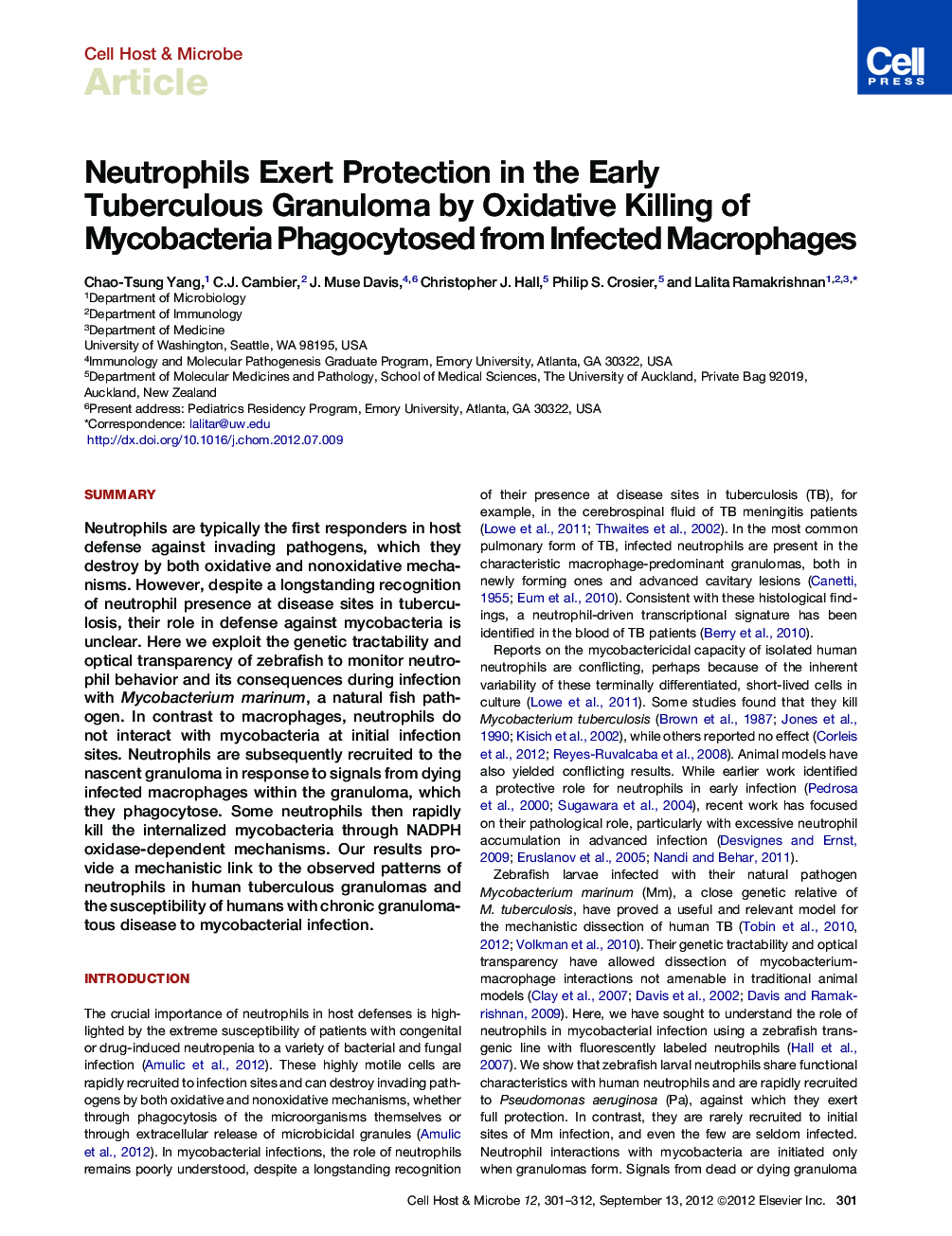| Article ID | Journal | Published Year | Pages | File Type |
|---|---|---|---|---|
| 4361156 | Cell Host & Microbe | 2012 | 12 Pages |
SummaryNeutrophils are typically the first responders in host defense against invading pathogens, which they destroy by both oxidative and nonoxidative mechanisms. However, despite a longstanding recognition of neutrophil presence at disease sites in tuberculosis, their role in defense against mycobacteria is unclear. Here we exploit the genetic tractability and optical transparency of zebrafish to monitor neutrophil behavior and its consequences during infection with Mycobacterium marinum, a natural fish pathogen. In contrast to macrophages, neutrophils do not interact with mycobacteria at initial infection sites. Neutrophils are subsequently recruited to the nascent granuloma in response to signals from dying infected macrophages within the granuloma, which they phagocytose. Some neutrophils then rapidly kill the internalized mycobacteria through NADPH oxidase-dependent mechanisms. Our results provide a mechanistic link to the observed patterns of neutrophils in human tuberculous granulomas and the susceptibility of humans with chronic granulomatous disease to mycobacterial infection.
Graphical AbstractFigure optionsDownload full-size imageDownload high-quality image (285 K)Download as PowerPoint slideHighlights► Upon initial infection, mycobacteria evade neutrophil recruitment and phagocytosis ► Neutrophils are recruited to granulomas by signals from dying infected macrophages ► Neutrophils phagocytose infected macrophages and are protective in the early granuloma ► Neutrophils kill their phagocytosed mycobacteria via oxidative mechanisms
